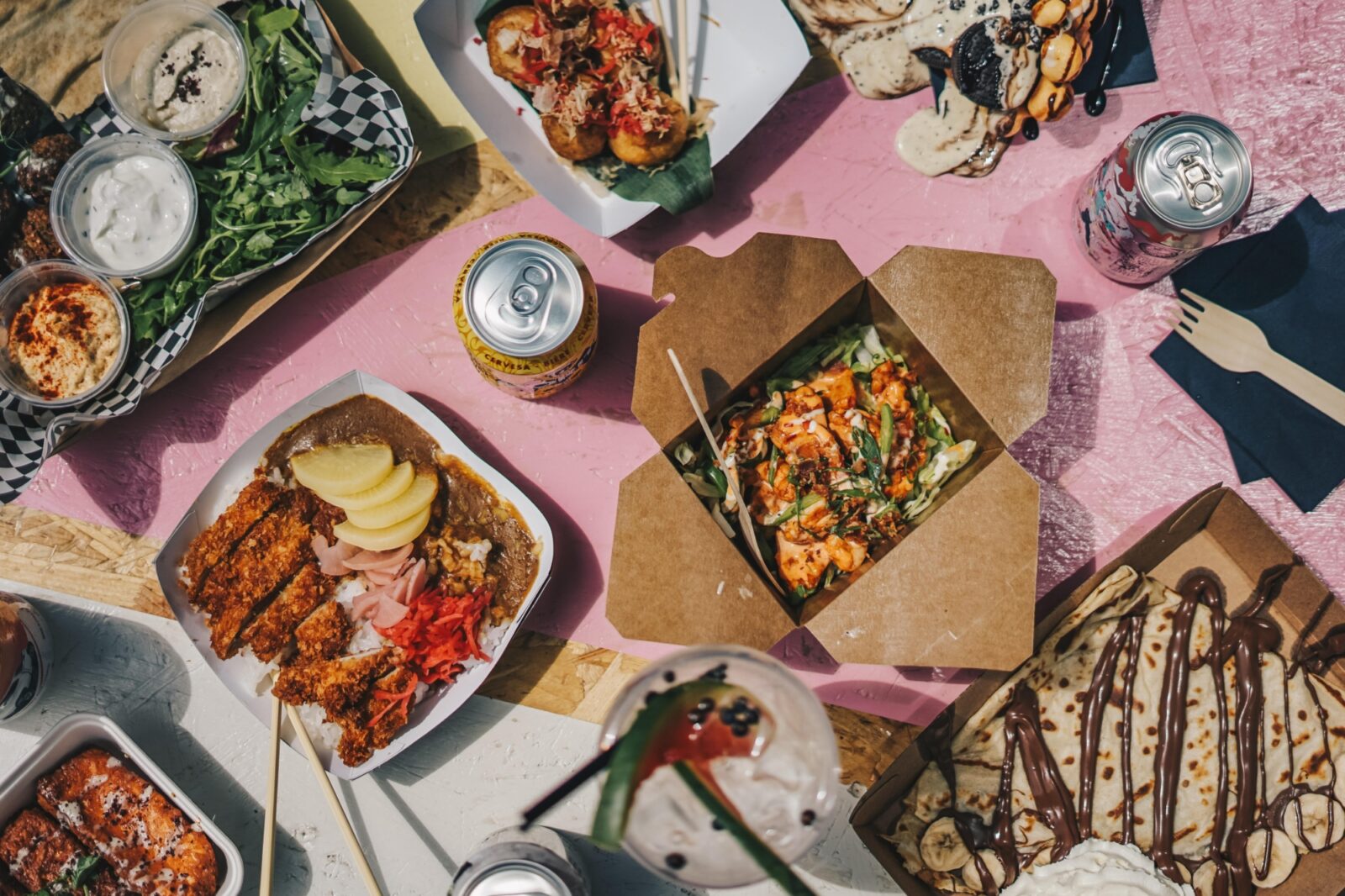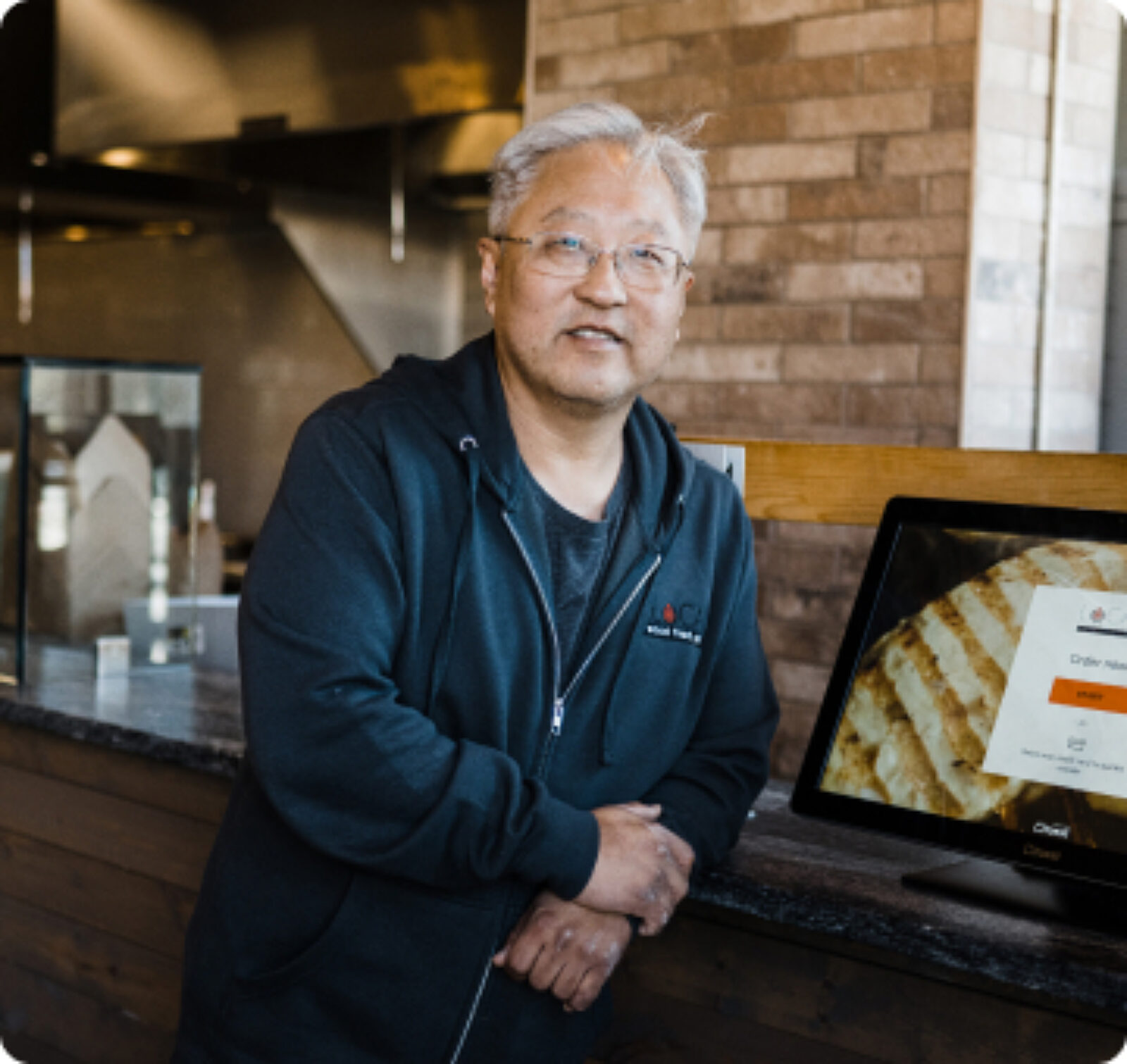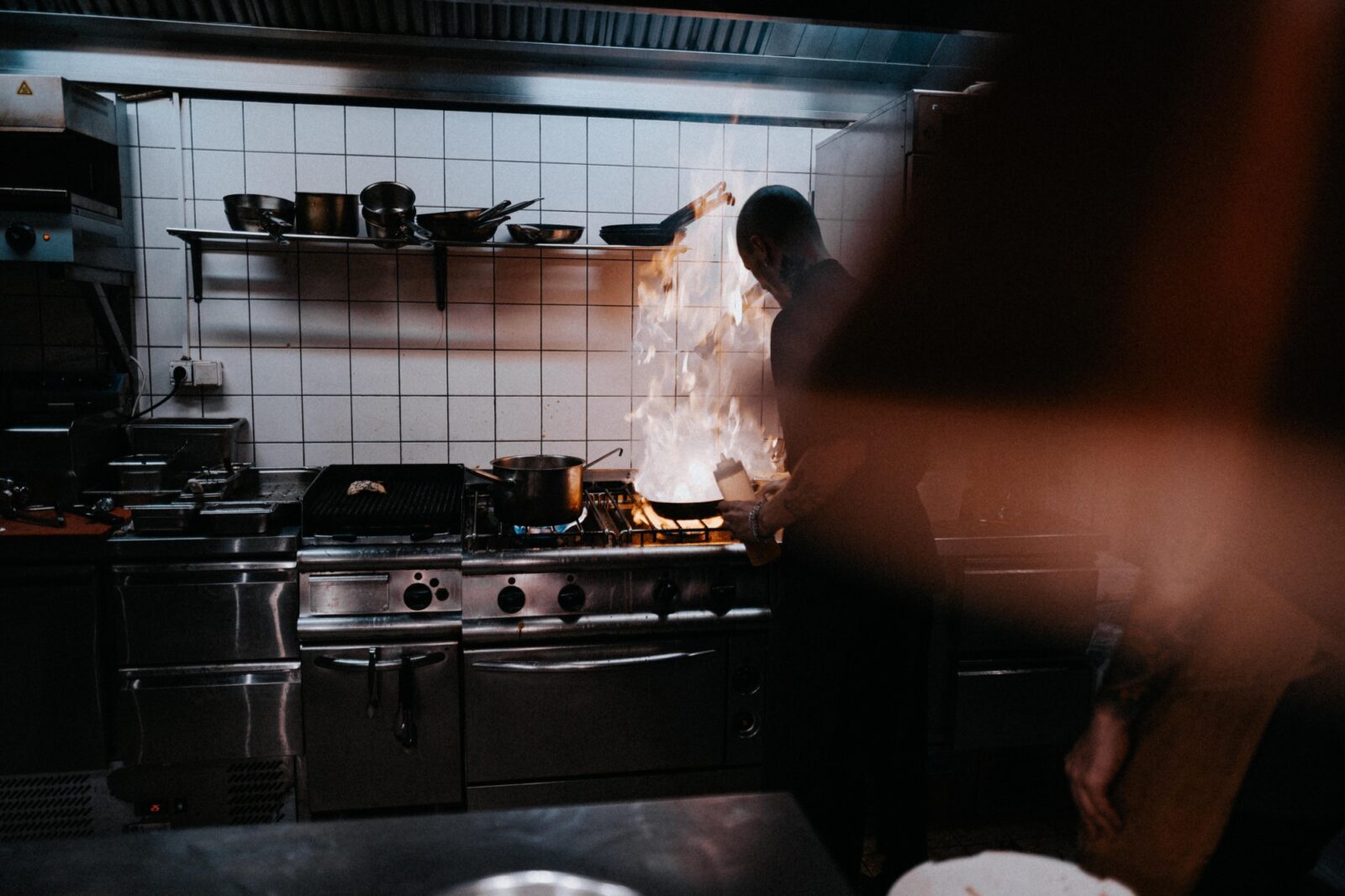
10 Strategies to Improve Delivery Efficiency for Restaurants
You can’t control every aspect of the delivery process, which is why it’s important to improve delivery efficiency in the areas you can control. Here are 10 ways to improve delivery efficiency.
The Uber Eats TeamAuthor

Learn how to make more $$ with online ordering with Danny from Local Expedition Woodfire Grill.
Take the CourseBy the time a customer places a delivery order with your restaurant, there’s a good chance they’re already hungry. They understand that a wait is unavoidable. But if that wait is longer than expected, their impatience will increase along with their hunger. Too long and you risk losing any chance to salvage customer satisfaction—no matter how great the food was when it left the building.
You can’t control every aspect of the delivery process, which is why it’s important to improve delivery efficiency in the areas you can control.
As a small business owner, you’re already juggling a lot. Balancing delivery orders with foot traffic from in-store customers is a serious challenge. A more efficient delivery process reduces some of that pressure. It lowers wait times, which, if they get too long, can frustrate customers and cause food to lose freshness while in transit. It also cuts down on the amount of time staff spend managing deliveries, making your employees’ lives easier.
That all adds up to earning a better reputation with customers while saving money on labor costs.
What Makes a Delivery System Efficient?
An efficient delivery system is one that gets orders out as fast as possible, without sacrificing food quality or pushing employees too hard. With an efficient system, employees understand their role in the process and have the tools needed to do their part quickly and effectively. Achieve all that, and things run more smoothly with minimal confusion and fewer unnecessary bottlenecks slowing things down.
It takes work to get to that point, but we’ve got some tips to help get you there.
How to Improve Delivery Efficiency
Implementing some key strategies can go a long way toward achieving an efficient delivery process. Here are our top 10:
Curate delivery-specific menus
Some foods fare better in transit than others. You likely have menu items that are faster to prepare and package than others. And some of your dishes have higher margins than others. All those considerations should be factored into deciding which items to include on a delivery menu.
Making your most time- and labor-intensive items only available in-house reduces how often your kitchen staff has to balance that work with other orders, helping the kitchen run more smoothly. On delivery orders, sticking with dishes that have a high profit margin helps ensure that you’re making enough money for the extra work to be worth it.
And creating a delivery-only menu with items that are better suited to travel is a win-win for your staff and your customers. Your team can have clear expectations about the types of delivery orders they’ll need to prepare and package, and your customers can enjoy food that arrives fresh to their doorstep.
Digitize the delivery process
Hungry customers care about convenience. To some people, picking up a phone to place an order can feel like more work than using an app or website. For those customers, having a digital ordering option can make the process of getting a meal feel a bit more effortless.
And from your perspective, logging all your delivery orders manually can be time-consuming. Those are precious hours when you’re also tasked with managing other workstreams. Digitizing the process for delivery orders not only allows you to earn business from people who prefer placing orders online, but it also makes tracking those orders more automated.
Even for restaurant owners who enjoy the personal touch of a phone conversation, having a digital solution in the mix can help expand order capacity and streamline information-logging and accounting tasks.
Prioritize orders
Running your kitchen on a first-come, first-served basis may work well at some places. But many restaurants that offer delivery, pickup, and dine-in services may want to reconsider that approach. For delivery orders, you have to factor in transit time on top of meal prep time. You may face cases where prioritizing an onsite diner’s order could stretch the delivery customer’s wait over an hour, while preparing the delivery order first would only add a few minutes for the in-restaurant patron.
Think strategically about order prioritization, weighing priority based on how long particular orders will take to make, how far the delivery is, and how wait times will affect the customers’ experience.
Let customers schedule ahead
Many customers won’t think to place an order until they’re already hungry, but some people are planners. If you provide them the option to schedule their delivery in advance, you get a head start on fitting them in. Many online ordering systems and third-party delivery platforms include advance scheduling as a feature, so enabling this option at most restaurants is easy.
Advance orders let you complete any prep work you can early, making things easier on the kitchen during the busiest times. They also help you make better time estimates on the other orders that come in. And for deliveries that your on-staff drivers make, you may even be able to plan a more efficient route, especially if multiple advance orders for the same area of town come in for the same time frame.
Be realistic with your time estimates
Sometimes you’ll lose immediate business when someone hears that the delivery wait is long. But you risk losing even more long-term business if you frequently get your time estimates wrong. Waiting an hour for food doesn’t feel so bad if you know what to expect. But waiting an hour after a restaurant tells you it will take 20 minutes is enough to make some customers upset.
Predicting delivery times is tricky, since so many factors come into play: the amount of time it takes to prepare the order, how busy the restaurant is, distance to the delivery dropoff, and street traffic that time of day, just to name a few. Many online ordering systems and third-party delivery platforms can help by providing automatic delivery estimates. In many cases, those will serve you well. But anytime your kitchen or drivers are struggling to keep up, it’s important to update the delivery estimates manually (if you have the ability to do so) and communicate any delays to your customers.
Pay close attention to how various factors affect the time it takes to get orders out, so you get better at judging estimates. And make sure you remember the human factor: All of your workers (including the drivers) need breaks, as well as the space to make the occasional error (it happens). Allowing a little room for those factors in your calculations is crucial to improving accuracy.
Create a separate counter or pickup area for delivery drivers
The more time delivery drivers spend waiting in line with customers, the less fresh their items will be. Speed up the process of getting orders into drivers’ hands by dedicating an area in the restaurant just for pickup orders. As a bonus, this doesn’t just improve the delivery experience; it also creates a better experience for customers who stop in to pick up takeout orders.
Plus, it also keeps drivers from getting in the way of servers and in-person patrons. This all helps to improve not just delivery efficiency but also a better experience for everyone in the restaurant.
Allow customers to track their delivery in real-time
When your restaurant is slammed, fielding phone calls from eager customers asking where their delivery order is only slows things down further. You may not have much control over deliveries once they leave the restaurant, but you do have the power to track the progress of the orders on the way. And many online ordering systems and third-party delivery platforms give you the power to share that information with customers automatically.
Hungry customers can check how much longer it will be until they can eat, which improves their delivery experience. Restaurants can use that same tracking information to follow their drivers’ progress, note any abnormal traffic conditions they need to factor in, and provide better time estimates on upcoming delivery orders. It’s a win-win all around.
Create workflows that minimize room for errors
Busy restaurants tend to feel chaotic. Efficient restaurants can reduce the stress of the busiest times by creating clearly defined workflows. Each time a delivery order comes in, you want everyone on the staff to know what steps to take, in what order, to get that delivery to the customer’s door as quickly as possible. And while human error is inevitable, you can design your workflow in a way that leaves less room for slip ups, ensuring that the process runs smoothly as often as possible.
For example, defining a clear process for order prioritization—who’s responsible for deciding order priority, what the criteria is for that decision, and how they communicate it to relevant staff—reduces confusion. Instead of worrying about which tickets to tackle first in real time, everyone involved will know what to do beforehand. That kind of clarity can also reduce employee conflict. If your staff members aren’t on the same page, disagreements in the heat of the moment can add up and affect your overall efficiency.
Designing a workflow (or revisiting the one you have now) is also a good opportunity to consider ways technology can make life easier for your staff and aid in efficiency. The technology systems you already use may offer features you never implemented that could save time and work. Or you may be using multiple products that would all serve you better if you set up integration between them. When the system you have works smoothly, it saves everyone time and cuts down on costly mistakes.
Leverage feedback from your team and customers
As the person implementing these strategies and trying to design a better overall system, you probably have a high-level view of it all. But all the people involved in the day-to-day execution of those strategies see different sides of your delivery process. They can offer unique insights on opportunities they see for improvement and bottlenecks or issues they deal with now.
Part of getting employee feedback is creating a culture where they feel comfortable speaking up. Make it clear that you value what they have to say, and make a real effort to implement changes based on their feedback. Consider setting up regular check-ins (maybe monthly or quarterly) that give them the chance to voice their opinions, to systematize the process of hearing from them.
Even if you strive to create a culture of open feedback, some employees will feel more comfortable providing feedback anonymously. Create surveys where they can do just that. You can go the old-fashioned route of leaving a stack of paper surveys for your employees or develop an online version, depending on what you think your staff will respond to best.
And, of course, customer feedback is as important here as in every other aspect of running a restaurant. Ask loyal customers directly for feedback on their delivery experience. Send customer surveys. And pay close attention to what delivery customers say in reviews. If certain menu items regularly earn complaints from delivery customers, you know to remove them from the delivery menu. If they complain about inaccurate time estimates, prioritize improving your estimation process. Listen and apply what you learn.
Track and analyze your delivery efficiency
In addition to the feedback you receive from people, start tracking metrics that measure delivery efficiency as well. That could include collecting data on the average time each menu item takes to prepare (and how much it varies), how often you meet and miss your time estimates, and the frequency of errors that slow things down.
Data can provide a straightforward picture of your current delivery efficiency and evidence on which strategies meaningfully contribute to achieving a more efficient delivery process over time. Plus, collecting data provides additional valuable insights, such as which menu items are the most popular for delivery customers, and which routinely net you the best reviews. You can use that information to improve your delivery menu.
Depending on your current systems and processes, some of the key performance indicators (KPIs) you choose to track may need to be logged manually (which could, ironically, hurt your overall efficiency). But with the many restaurant technology products available today—from POS (point-of-sale) systems to online ordering software and third-party delivery platforms—you can gain a lot of rich analytics on the delivery process automatically.
How technology can help
Running a successful restaurant is hard, no matter how you do it. Integrating the strengths of your technology tools—like your POS system and your third-party delivery platform—is just one way to streamline your delivery efficiency and make your operations just a little bit more effortless.
Is this article helpful?
DISCLAIMER: This information is provided for general informational purposes only, and publication does not constitute an endorsement. Toast does not warrant the accuracy or completeness of any information, text, graphics, links, or other items contained within this content. Toast does not guarantee you will achieve any specific results if you follow any advice herein. It may be advisable for you to consult with a professional such as a lawyer, accountant, or business advisor for advice specific to your situation.
Read More
Subscribe to On the Line
Sign up to get industry intel, advice, tools, and honest takes from real people tackling their restaurants’ greatest challenges.


